【Laravel笔记】Mysql 数据库操作详解
Laravel 提供了强大的数据库操作,本人使用最多的是Mysql,所以本文只针对此数据库学习记录,在我自己开发的CMS系统里,也封闭了数据库的基本操作,能满足我日常的需求,但和Laravel比起来简直太弱鸡了,本人不是太喜欢ORM方式操作数据库,更喜欢使用原生语句,这样更有助于性能的优化。
一、数据库配置
数据库的配置文件在 config/database.php 文件中。你可以在这个文件中配置Laravel支持的各种数据库连接,并指定默认的数据库连接。这里只针对Mysql说明,打开配置文件,找到下面项:
'default' => env('DB_CONNECTION', 'mysql'), //默认使用mysql数据库
'mysql' => [
'driver' => 'mysql',//驱动类型
'url' => env('DATABASE_URL'),//数据库连接串的方式支持:mysql://root:password@127.0.0.1/forge?charset=UTF-8 优先使用此项
'host' => env('DB_HOST', '127.0.0.1'),//数据库服务器
'port' => env('DB_PORT', '3306'),//连接端口
'database' => env('DB_DATABASE', 'forge'),//数据库名
'username' => env('DB_USERNAME', 'forge'),//用户名
'password' => env('DB_PASSWORD', ''),//登陆密码
'unix_socket' => env('DB_SOCKET', ''),//socket连接
'charset' => 'utf8mb4',//默认字符
'collation' => 'utf8mb4_unicode_ci',//字段使用的默认字符
'prefix' => 'kwok_',//表前缀设置
'prefix_indexes' => true,
'strict' => true,//读写同步启用
'engine' => null,//引擎
'options' => extension_loaded('pdo_mysql') ? array_filter([
PDO::MYSQL_ATTR_SSL_CA => env('MYSQL_ATTR_SSL_CA'),
]) : [],
],可以看到很多以env函数开始的配置,这说明 先从.env读取不成功的情况下,才使用后面的默认值,目前我还不知道官方使用.env的目的是否为了保护安全,但我使用的时候去掉env函数,直接将配置信息写到php文件里的。
二、使用原生语句CRUD操作
我们通常在上一篇里讲到的控制器里引用数据库操作包(use IlluminateSupportFacadesDB;)对数据进行增、删、改、查操作,语句也非常简洁。
一旦配置好数据库连接,你就可以使用 DB Facade 来执行查询。它为每种类型的查询都提供了相应的方法:select、update、insert、delete 以及 statement。
原生语句没有查询构造器使用起来方便,此处做为扩展知识了解即可,重点请关注后面内容。
1、DB::select 查询操作
<?php
namespace App/Http/Controllers;
use App/Http/Controllers/Controller;
use Illuminate/Support/Facades/DB;//引入DB包
class UserController extends Controller
{
public function index()
{
$users = DB::select('SELECT * FROM `users` WHERE `active` = ?', [1]);//查询ID=1的用户,预查询以防止sql注入
return view('user.index', ['users' => $users]);
}
}select 方法将始终返回一个包含查询结果的数组。数组中的每个结果都对应一个数据库记录的 stdClass 对象:
如果要访问返回的对象,我们应该使用下面的方式,而不是数组:
$users = DB::select('select * from users');//stdClass 对象
foreach ($users as $user) {
echo $user->name;//读取对象里的字段
}预查询中除了可以使用“?”以外,还可以使用绑定参数的形势更明确的区别查询:
$results = DB::select('select * from users where id = :id', ['id' => 1]);2、DB::insert 插入操作
跟 select 方法一样,该方法的第一个和第二个参数分别是原生 SQL 语句和绑定的数据:
DB::insert('insert into users (id, name) values (?, ?)', [1, 'Kwok']);//插入ID=1,name=Kwok的用户3、DB::update 更新操作
方法用于更新数据库中现有的记录。该方法将会返回受到本次操作影响的记录行数。
$affected = DB::update(
'update users set votes = 100 where name = ?',
['Kwok']
);//$affected 应该返回1行,如果votes已是100,则返回04、DB::delete 删除操作
与 update 方法一样,将返回受到本次操作影响的记录行数:
$deleted = DB::delete('delete from users');//无限制的删除了所有用户5、通用方法执行任何sql语句
虽然可以在此方法里运行增、删、改、查的操作,但使用这个语句的时候要注意安全哦~因为我们也可以删除整个表:
DB::statement('drop table users'); //干掉整个表~6、不安全的非预处理查询:请永远不要让用户输入的值出现在未预处理的语句里。
DB::unprepared('update users set votes = 100 where name = "Kwok"');此方法一般用于导入数据、第一次安装CMS时使用。尽量避免在线上业务使用,如果在事务中使用statement 和 unprepared 方法时,需要留意导致 隐匿提交 的sql语句,这些语句将会导致数据库引擎间接提交整个事务,从而让 Laravel 不知道数据库的事务级别。其中一个例子是创建数据表:
DB::unprepared('create table a (col varchar(1) null)');三、查询构造器
查询构造器是一种仅次于ORM操作的方法,查询生成器提交了一些常用的且非常方便的数据操作封装,可以用于执行程序中大多数操作,基本可以替换上面的原生语句操作。
如果要看原生语句,请使用dd和dump方法:
DB::table('users')->where('votes', '>', 100)->dd();//显示调试信息,然后停止
DB::table('users')->where('votes', '>', 100)->dump();//显示调试信息,但允许请求继续执行1、查询操作->get()
使用 DB facade 提供的 table 方法开始查询。table 方法为指定的表返回一个链式查询构造器实例,允许在查询上链接更多约束,最后使用 get 方法检索查询结果:
<?php
namespace AppHttpControllers;
use AppHttpControllersController;
use IlluminateSupportFacadesDB;//引用数据库操作类
class UserController extends Controller
{
public function index()
{
$users = DB::table('users')->get();//获取users表里所有的用户
return view('user.index', ['users' => $users]);//返回给视图使用
}
}仔细看代码,和上面讲到的DB::select是不是一样的,只是封装后的使用方法更易阅读;
也是返回一个 stdClass 对象,然后遍历方式也同上面的代码,这里不重复说明。
技巧:Laravel 集合提供了各种及其强大的方法来映射和裁剪数据。有关 Laravel 集合的更多信息,请查看集合文档。
2、查询操作:条件限制 ->where()
$user = DB::table('users')->where('name', 'Kwok');//查询name=Kwok的用户
//select * from users where `name` = 'Kwok'
return $user->email;//返回用户的邮箱3、查询操作:只返回首行数据 ->first()
$user = DB::table('users')->where('name', 'Kwok')->first();
//select * from users where `name` = 'Kwok' limit 14、查询操作:限制字段 ->value()
上面都是使用的select *查询,对于性能是有影响的,因为我们只需要用户的邮箱,可以使用 ->value方法指定查询的字段:
//限制单个字段
$email = DB::table('users')->where('name', 'Kwok')->value('email');
//select `email` from users where `name` = 'Kwok'
//通过 id 字段值获取单行数据,可以使用 find 方法
$user = DB::table('users')->find(3);
//select * from users where `id` = 3
//限制多个字段
$users = DB::table('users')
->select('name', 'email as user_email')
->get();5、查询操作:某一列的值 ->pluck()
$titles = DB::table('users')->pluck('title');
//select `title` from users
foreach ($titles as $title) {
echo $title;
}
//提供第二个参数来指定结果集中要作为键的列
$titles = DB::table('users')->pluck('title', 'name');
foreach ($titles as $name => $title) {
echo $name.'->'.$title;//用户名 -> 标题
}6、查询操作:大量数据分块->orderBy('字段')->pluck()
DB::table('users')->orderBy('id')->chunk(100, function ($users) {
foreach ($users as $user) {
//每次查询 100条,查询整个表
if($user->name = 'Kwok') return false;//找到用户kwok时,不再查询
}
});如果在对结果进行分块时更新数据库记录,那分块结果可能会以意想不到的方式更改。如果您打算在分块时更新检索到的记录,最好使用 chunkById 方法。此方法将根据记录的主键自动对结果进行分页:
DB::table('users')->where('active', false)//查询满足条件active=false的用户
->chunkById(100, function ($users) {//每次查询100条,并将结果交给闭包处理
foreach ($users as $user) {//遍历结果
DB::table('users')
->where('id', $user->id)//查询当前用户
->update(['active' => true]);//将当前用户的active= true
}
});注意:当在更新或删除块回调中的记录时,对主键或外键的任何更改都可能影响块查询。这可能会导致记录未包含在分块结果中。
7、查询操作:流式传输结果->orderBy('字段')->lazy()->each()
lazy 方法的工作方式类似于 chunk 方法,因为它以块的形式执行查询。但是,lazy() 方法不是将每个块传递给回调,而是返回一个 LazyCollection,它可以让您与结果进行交互单个流:
DB::table('users')->orderBy('id')->lazy()->each(function ($user) {
//通过闭包处理当前数据
});如果同上操作,更新用户时最好使用 lazyById 或 lazyByIdDesc 方法。 这些方法将根据记录的主键自动对结果进行分页:
DB::table('users')->where('active', false)
->lazyById()->each(function ($user) {
DB::table('users')
->where('id', $user->id)
->update(['active' => true]);
});注意:在迭代记录时更新或删除记录时,对主键或外键的任何更改都可能影响块查询。这可能会导致记录不包含在结果中。
7、查询操作:聚集
查询构建器还提供了多种检索聚合值的方法,例如 count, max, min, avg, 和 sum。您可以在构建查询后调用这些方法中的任何一个:
$users = DB::table('users')->count();//统计查询结果
$price = DB::table('orders')->max('price');//价格最高的
//与其他子句结合使用,以微调您的合计值的计算方式:
$price = DB::table('orders')
->where('finalized', 1)//条件
->avg('price');//平均价格8、查询操作:判断记录是否存在
除了通过 count 方法可以确定查询条件的结果是否存在之外,还可以使用 exists 和 doesntExist 方法:
if (DB::table('orders')->where('finalized', 1)->exists()) {
// 记录存在
}
if (DB::table('orders')->where('finalized', 1)->doesntExist()) {
// 记录不存在
}9、查询操作:其它扩展查询
//distinct 方法会强制让查询返回的结果不重复:
$users = DB::table('users')->distinct()->get();
//如果你已经有了一个查询构造器实例,并且希望在现有的查询语句中加入一个字段,那么你可以使用 addSelect 方法
$query = DB::table('users')->select('name');
$users = $query->addSelect('age')->get();
//原生表达式:有时可能需要在查询中插入任意字符串。要创建原始字符串表达式,可以使用 DB facade 提供的 raw 方法:
$users = DB::table('users')
->select(DB::raw('count(*) as user_count, status'))
->where('status', '<>', 1)
->groupBy('status')
->get();
//注意:原生表达式将会被当做字符串注入到查询中,因此你应该极度小心避免创建 SQL 注入的漏洞。
//代替 DB::raw,将原生表达式插入查询的各个部分。注意,Laravel 无法保证所有使用原生表达式的查询都受到防 SQL 注入漏洞保护。
$orders = DB::table('orders')
->selectRaw('price * ? as price_with_tax', [1.0825])
->get();
//selectRaw 方法可以代替 addSelect(DB::raw(...))。该方法的第二个参数是可选项,值是一个绑定参数的数组:
//whereRaw 和 orWhereRaw 方法将原生的「where」注入到你的查询中。这两个方法的第二个参数是可选项,值是一个绑定参数的数组:
$orders = DB::table('orders')
->whereRaw('price > IF(state = "TX", ?, 100)', [200])
->get();
//havingRaw 和 orHavingRaw 方法可以用于将原生字符串作为「having」语句的值。这两个方法的第二个参数是可选项,值是一个绑定参数的数组:
$orders = DB::table('orders')
->select('department', DB::raw('SUM(price) as total_sales'))
->groupBy('department')
->havingRaw('SUM(price) > ?', [2500])
->get();
//orderByRaw 方法可用于将原生字符串设置为「order by」语句的值:
$orders = DB::table('orders')
->orderByRaw('updated_at - created_at DESC')
->get();
//groupByRaw 方法可以用于将原生字符串设置为 group by 语句的值:
$orders = DB::table('orders')
->select('city', 'state')
->groupByRaw('city, state')
->get();
10、查询操作:Joins
查询构造器也还可用于向查询中添加连接子句。若要执行基本的「内链接」,你可以对查询构造器实例使用 join 方法。传递给 join 方法的第一个参数是需要连接到的表的名称,而其余参数指定连接的列约束。您甚至还可以在一个查询中连接多个表:
$users = DB::table('users')
->join('contacts', 'users.id', '=', 'contacts.user_id')
->join('orders', 'users.id', '=', 'orders.user_id')
->select('users.*', 'contacts.phone', 'orders.price')
->get();如果你想使用 left join 或者 right join 代替 inner join ,可以使用 leftJoin 或者 rightJoin 方法。这两个方法与 join 方法用法相同:
//leftJoin 左连接
$users = DB::table('users')
->leftJoin('posts', 'users.id', '=', 'posts.user_id')
->get();
//右连接
$users = DB::table('users')
->rightJoin('posts', 'users.id', '=', 'posts.user_id')
->get();你可以使用 crossJoin 方法执行「交叉连接」。交叉连接在第一个表和被连接的表之间会生成笛卡尔积:
$sizes = DB::table('sizes')
->crossJoin('colors')
->get();您还可以指定更高级的联接子句。首先,将闭包作为第二个参数传递给 join 方法。闭包将收到一个 illumbDatabaseQueryJoinClause 实例,该实例允许您指定对 join 子句的约束:
DB::table('users')
->join('contacts', function ($join) {
$join->on('users.id', '=', 'contacts.user_id')->orOn(...);
})
->get();如果你想要在连接上使用「where」风格的语句,你可以在连接上使用 JoinClause 实例中的 where 和 orWhere 方法。这些方法会将列和值进行比较,而不是列和列进行比较:
DB::table('users')
->join('contacts', function ($join) {
$join->on('users.id', '=', 'contacts.user_id')
->where('contacts.user_id', '>', 5);
})
->get();你可以使用 joinSub,leftJoinSub 和 rightJoinSub 方法关联一个查询作为子查询。他们每一种方法都会接收三个参数:子查询,表别名和定义关联字段的闭包。
如下面这个例子,获取含有用户最近一次发布博客时的 created_at 时间戳的用户集合:
$latestPosts = DB::table('posts')
->select('user_id', DB::raw('MAX(created_at) as last_post_created_at'))
->where('is_published', true)
->groupBy('user_id');
$users = DB::table('users')
->joinSub($latestPosts, 'latest_posts', function ($join) {
$join->on('users.id', '=', 'latest_posts.user_id');
})->get();查询构造器还提供了一种简洁的方式将两个或者多个查询「联合」在一起。例如,你可以先创建一个查询,然后使用 union 方法来连接更多的查询:
$first = DB::table('users')
->whereNull('first_name');
$users = DB::table('users')
->whereNull('last_name')
->union($first)
->get();查询构造器不仅提供了 union 方法,还提供了一个 unionAll 方法。当查询结合 unionAll 方法使用时,将不会删除重复的结果。unionAll 方法的用法和 union 方法一样。
11、查询操作:Where语句高级应用
你可以在 where 语句中使用查询构造器的 where 方法。调用 where 方法需要三个基本参数。第一个参数是字段的名称。第二个参数是一个操作符,它可以是数据库中支持的任意操作符。第三个参数是与字段比较的值。
//在 users 表中查询 votes 字段等于 100 并且 age 字段大于 35 的数据:
$users = DB::table('users')
->where('votes', '=', 100)
->where('age', '>', 35)
->get();
//为了方便起见。如果你想要比较一个字段的值是否 等于 给定的值。你可以将这个给定的值作为第二个参数传递给 where 方法。那么,Laravel 会默认使用 = 操作符:
$users = DB::table('users')->where('votes', 100)->get();
//您可以使用数据库支持的任意操作符:
$users = DB::table('users')
->where('votes', '>=', 100)//大于等于
->get();
$users = DB::table('users')
->where('votes', '<>', 100)//不等于
->get();
$users = DB::table('users')
->where('name', 'like', 'T%')//以T开始的用户名
->get();
//您也可以将一个条件数组传递给 where 方法。通常传递给 where 方法的数组中的每一个元素都应该包含 3 个元素:
$users = DB::table('users')->where([
['status', '=', '1'],
['subscribed', '<>', '1'],
])->get();注意:PDO 不支持绑定字段名。因此,你不应该允许让用户输入字段名进行查询引用,包括结果集「排序」语句。
当链式调用多个 where 方法的时候,这些「where」语句将会被看成是 and 关系。另外,您也可以在查询语句中使用 orWhere 方法来表示 or 关系。orWhere 方法接收的参数和 where 方法接收的参数一样:
$users = DB::table('users')
->where('votes', '>', 100)
->orWhere('name', 'John')
->get();
//如果您需要在括号内对 or 条件进行分组,那么可以传递一个闭包作为 orWhere 方法的第一个参数:
$users = DB::table('users')
->where('votes', '>', 100)
->orWhere(function($query) {
$query->where('name', 'Abigail')
->where('votes', '>', 50);
})
->get();
//select * from users where votes > 100 or (name = 'Abigail' and votes > 50)注意:为了避免应用全局作用出现意外,您应该用 orWhere 调用这个分组。
12、查询操作:JSON Where语句
如果你的数据库支持JSON类型( MySQL 5.7+),可以在where里使用 -> 操作符来查询 JSON 字段:
$users = DB::table('users')
->where('preferences->dining->meal', 'salad')
->get();
//您可以使用 whereJsonContains 方法来查询 JSON 数组。但是 SQLite 数据库不支持该功能:
$users = DB::table('users')
->whereJsonContains('options->languages', 'en')
->get();
//如果您的应用使用的是 MySQL 或者 PostgreSQL 数据库,那么您可以向 whereJsonContains 方法中传递一个数组类型的值:
$users = DB::table('users')
->whereJsonContains('options->languages', ['en', 'de'])
->get();
//你可以使用 whereJsonLength 方法来查询 JSON 数组的长度:
$users = DB::table('users')
->whereJsonLength('options->languages', 0)
->get();
$users = DB::table('users')
->whereJsonLength('options->languages', '>', 1)
->get();关于查询 还有更多的使用方法,如:whereBetween / orWhereBetween(两个值之间),whereNotBetween / orWhereNotBetween(不在两个值之间),whereIn / whereNotIn / orWhereIn / orWhereNotIn(在给定的数组里),whereNull / whereNotNull / orWhereNull / orWhereNotNull(给定的值是否为NULL),whereDate / whereMonth / whereDay / whereYear / whereTime(比较字段的值与给定的日期值是否相等),whereColumn / orWhereColumn(给定的字段的值是否相等),想要了解这些知识可以查询官方文档。
13、查询操作:Limit 和 Offset
你可以使用 skip 和 take 方法去限制查询结果的返回数量或者在查询结果中跳过给定数量:
$users = DB::table('users')->skip(10)->take(5)->get();或者,你可以使用 limit 和 offset 方法。这些方法在功能上等同于 take 和 skip 方法,如下:
$users = DB::table('users')
->offset(10)
->limit(5)
->get();当传入 HTTP 请求有一个给定的值的时候你才需要使用一个 where 语句。你可以使用 when 方法去实现:
$role = $request->input('role');
$users = DB::table('users')
->when($role, function ($query, $role) {
return $query->where('role_id', $role);
})
->get();14、插入操作
查询构建器还提供了一个「插入」方法,可用于将记录插入到数据库表中。 insert 方法接受一个列名和值的数组:
DB::table('users')->insert([
'email' => 'kayla@example.com',
'votes' => 0
]);你可以通过传递数组数组一次插入多条记录。每个数组代表一个应该插入到表中的记录:
DB::table('users')->insert([
['email' => 'picard@example.com', 'votes' => 0],
['email' => 'janeway@example.com', 'votes' => 0],
]);insertOrIgnore 方法将在将记录插入数据库时忽略错误:
DB::table('users')->insertOrIgnore([
['id' => 1, 'email' => 'sisko@example.com'],
['id' => 2, 'email' => 'archer@example.com'],
]);如果数据表有自增 ID ,使用 insertGetId 方法来插入记录可以返回 ID 值:
$id = DB::table('users')->insertGetId(
['email' => 'john@example.com', 'votes' => 0]
);15、更新操作
upsert 方法将插入不存在的记录,并使用您可以指定的新值更新已经存在的记录。该方法的第一个参数包含要插入或更新的值,而第二个参数列出了在关联表中唯一标识记录的列。 该方法的第三个也是最后一个参数是一个列数组,如果数据库中已经存在匹配的记录,则应该更新这些列:
DB::table('flights')->upsert([
['departure' => 'Oakland', 'destination' => 'San Diego', 'price' => 99],
['departure' => 'Chicago', 'destination' => 'New York', 'price' => 150]
], ['departure', 'destination'], ['price']);在上面的例子中,Laravel 会尝试插入两条记录。如果已经存在具有相同 departure 和 destination 列值的记录,Laravel 将更新该记录的 price 列。
除了将记录插入数据库之外,查询构建器还可以使用 update 方法更新现有记录。 update 方法与 insert 方法一样,接受一个列和值对数组,指示要更新的列。 update 方法返回受影响的行数。您可以使用 where 子句限制 update 查询:
$affected = DB::table('users')
->where('id', 1)
->update(['votes' => 1]);有时您可能希望更新数据库中的现有记录,或者如果不存在匹配记录则创建它。在这种情况下,可以使用 updateOrInsert 方法。
DB::table('users')
->updateOrInsert(
['email' => 'john@example.com', 'name' => 'John'],
['votes' => '2']
);更新 JSON 字段时,你可以使用 -> 语法访问 JSON 对象中相应的值。
$affected = DB::table('users')
->where('id', 1)
->update(['options->enabled' => true]);15、自增自减
查询构建器还提供了方便的方法来增加或减少给定列的值。这两种方法都至少接受一个参数:要修改的列。可以提供第二个参数来指定列应该增加或减少的数量:
DB::table('users')->increment('votes');//+1
DB::table('users')->increment('votes', 5);//+5
DB::table('users')->decrement('votes');//-1
DB::table('users')->decrement('votes', 5);//-5您还可以在操作期间指定要更新的其他列:
DB::table('users')->increment('votes', 1, ['name' => 'John']);//votes+1后顺便把用户名改为John16、删除操作
查询构建器的 delete 方法可用于从表中删除记录。 delete 方法返回受影响的行数。您可以通过在调用 delete 方法之前添加 “where” 子句来限制 delete 语句:
$deleted = DB::table('users')->delete();//删除表里所有数据,自增ID保留
$deleted = DB::table('users')->where('votes', '>', 100)->delete();//按条件操作删除
DB::table('users')->truncate();//清空表查询构建器还包括一些函数,可帮助您在执行 select 语句时实现「悲观锁」。 要使用「共享锁」执行语句,您可以调用 sharedLock 方法。共享锁可防止选定的行被修改,直到您的事务被提交:
DB::table('users')
->where('votes', '>', 100)
->sharedLock()
->get();或者,您可以使用 lockForUpdate 方法。「update」锁可防止所选记录被修改或被另一个共享锁选中:
DB::table('users')
->where('votes', '>', 100)
->lockForUpdate()
->get();
除非注明,网络人的文章均为原创,转载请以链接形式标明本文地址:https://www.55mx.com/post/206
本站推荐阅读
热门点击文章
- 【Laravel经验】强大的Model应该这样用阅读:515 评论:0
- 各大门户网站网页变灰的代码阅读:514 评论:0
- 在城市体面的“流浪”指北阅读:493 评论:0
- 利用程序计算小学3年级的奥数题 2,4,5,7,11,13,23,25,( ),( )阅读:457 评论:0
- mysql 14001错误 could not start the service mysql阅读:437 评论:0
- 【Laravel实战】Ajax验证captcha 验证码阅读:435 评论:0
- 家庭云(NAS)最简单的组建技术阅读:424 评论:1
- 测试阿里云服务器的1M带宽能支持多少人在线阅读:418 评论:0
- “无奸不商”的原来意思“无尖不商”,可现实却是“无贱不商”阅读:418 评论:0
- 通过指令3秒查出你的男(女)朋友用手机在做什么阅读:418 评论:0
- 一个可以防止图片木马的PHP上传类阅读:418 评论:0
- 通过Kcptun给Shadowsocks加速,能跑满你的带宽阅读:418 评论:0
- PHP中实用的常量和系统全局变量阅读:417 评论:0
- 让你的网站每天更新快照并实时收录并不难!阅读:416 评论:0
- 一个比较好用的JS原生封装Ajax.js,使用方法与jQuery一样阅读:404 评论:0






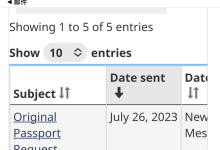
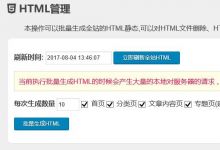
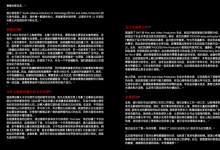
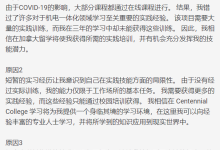
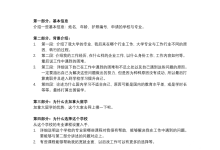

《【Laravel笔记】Mysql 数据库操作详解》的网友评论(0)